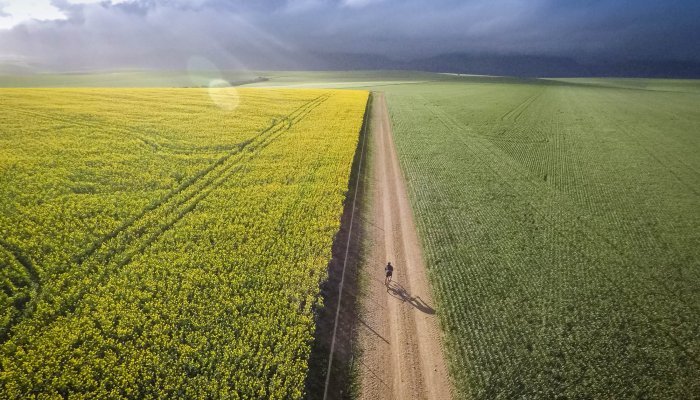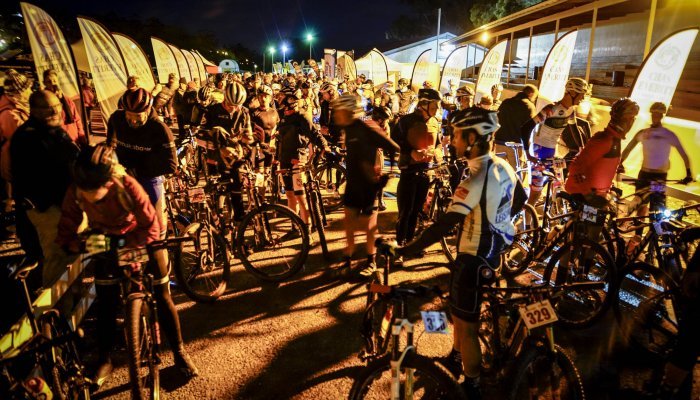Something old, something new... The jury seems to be out on defining exactly whether virtual reality is something from the past or something for the future. And just to be clear, I’m not referring to Avatar or some Hollywood science fiction film here, but rather touching on issues that may directly affect the way you and I will live our lives in the coming years.
The onset of the virus (does that not sound like a line from a sci-fi plot right there?) over a year ago has touched each of us in various ways. Loss or pain have brought some people closer together, while fear, panic and insecurity have forced wedges between many other segments of humanity.
Whatever your personal reality, the pandemic has hit home, and it has hit hard. This holds true for the professional sector as well, with the sporting event industry probably one of the sectors hardest hit by the Covid-19 fallout.
A mere 18 months ago, it was normal to join thousands of people at Newlands Stadium in Cape Town and to cheer on your team as 30 men battled it out on the pitch for 80 minutes. These games were unashamedly physical, with clashes taking place across the full gamut of sporting genres worldwide.
Travel to the other side of the planet, if you will, to the streets around La Bombonera in the La Boca district of Buenos Aires, where strangers danced with each other every time Messi netted a goal. In Australia, India and Sri Lanka, high fives and hugs would have been the order of the day whenever a wicket tumbled.
This selfsame exuberance and physicality held true for capoeira contests in Brazil, surfing in Hawaii, tug-of-war in Basque Country, Khalkha Bökh wrestling in Mongolia, or cheese rolling in the UK. In sport, we are programmed to engage viscerally and without holding back while we compete – across provincial and national borders – in the games of our choosing.

The race is to the ZWIFT
Was 2019/2020 the final swansong for sporting events and, if so, what can we expect in the future? The rise of apps such as Zwift and Rouvy, coupled with Wahoo indoor trainers and general gamification of the outdoor playing field, certainly points in this direction. Many pundits are of the opinion that virtual eventing is set to saturate the (non-)eventing business.
According to Jaco Prinsloo, one of the new breed of gamification specialists in South Africa, there is no reason why you cannot enjoy an online race as much as actually being out there on the route. He is a regular ‘Zwifter’ and, for anyone silently mouthing “WTF” while reading this, Zwift refers to a virtual reality cycling application.
Launched by founder and CEO, Eric Min, in 2015, this virtual training platform has boomed since the start of the pandemic and rates as one of only a handful of cycling industry players valued at over US$1 billion.
"I think like many of the digital and internet businesses, we've benefited from this pandemic," Min said in an interview with The Sydney Morning Herald. "What was clear was that people crave that social connection, and digital was perfectly fine".
The indoor trainer market rates as one of the sectors hitting the sweet spot during the pandemic, with hundreds of thousands of people swapping roads and trails to maintain their exercise regimen. With over 2.5 million registered users, the next step would be to invest in their own proprietary hardware.
The rest is history, with more than 1.6 million Zwift users having logged over an astounding six million miles on their indoor trainers in the virtual world of ‘Watopia’. This computer-generated graphical user interface allows users to see their avatar cycling amidst volcanoes, jungles, and other animated features while following any potential routes.
Their rides are tracked via exercise apps and power metres mounted on indoor electronic trainers, generally supported via Polar, Suunto, Garmin or other smart watches. One thing is for sure: these ‘Watopians’ don’t hold back. The current 24-hour distance record stands at 986km (go, Kurt Pauwels!), while Tim Searle is the first rider to have clocked 100,000km.

Outdoors comes indoors
The video game feel of riding through ‘Watopia’ does not suit all indoor athletes. More and more global events are filming their routes on 360-degree cameras, allowing riders (or runners, paddlers or paragliders, for that matter) to plug into a more believable virtual reality and remotely experience a true-to-life version of the landscape in situ.
Collaborative developments are also at an advanced stage to create trainers and base stands simulating specific terrain. These vibrating base stands or three-dimensional reactive bicycle trainers will lean when you turn into a tight corner, adjust to a gradient you are (supposedly) ascending, bounce on shock absorbers when you bunny-hop or vibrate to simulate navigating over rocks, roots or gravel.
The question I (and most probably the majority of outdoor enthusiasts) are asking is: will we ever return to the good old blood, sweat and grit of real-time eventing? Unfortunately, with the threat of a constantly mutating virus, the answer is somewhere between a resounding ‘maybe’ and a non-committal shoulder shrug.
It is a fact that hundreds of event operators have closed doors during the resulting economic downturn, and there has been an estimated drop of 37-42% in disposable income of their target market. International and local travel is becoming more expensive, plus there are massive additional costs to ensure your event is Covid-compliant.
The final nail in the coffin is that there has been a major shift in the perception of how safe the great outdoors is for a large percentage of potential participants. ‘Outside’ has (sadly) become a dirty word, with many making a conscious choice to remain in their safe, disinfected inner sanctum, from where they can race without any danger of physical contact.

Changing patterns
Take a moment before you go online to order that bike trainer, though. Key global events will never disappear completely, and I strongly believe there will be a resurgence in boutique-style events, too, where the organisers can limit numbers.
A couple of hundred competitors can easily comply with the current (or future-imperfect) regulations, either through batch starts or alternative routing and starting points, for example. Moreover, clever boxing by organisers could reduce their financial outlay, as they are well within their rights to cancel evening functions, medal ceremonies, VIP areas and similar cost areas.
Other potential developments may well see a shift in focus from annual sporting events to less formal gatherings of like-minded adventurers. There has already been significant growth in training weekends and skills clinics, with a move from ‘personal bests’ to personal growth.
Group outrides, family or friends weekends, trail open days and open-date races are the new non-events, and you still get your bragging rights when you gather around the braai fire and compare stats on your state-of-the-art smart watch. The benefit of these to destinations is that they can happen any time of the year, thus spreading the tourism love over 12 months.
Fastest Known Times (FKTs) and Solo Challenges move even closer to virtual eventing in that they can happen over 365 days. Basically, you can head onto a given route at any time of the year, with an online leaderboard tracking the competition. You even get your t-shirt and medal in the mail once you’ve completed your challenge!
There is no doubt that this ‘new normal’ will massively impact the economic bottom line for all events, even more so those of global stature. Financial forecasts for SA rugby, for example, paint a bleak picture more than 12 months after the initial lockdown, with international and test matches the exception rather than the rule.
In 2018, broadcast rights, gate fees, merchandising and sponsorship income amounted to a staggering R1.7 billion at last count. Yet, four years later, this world sporting code is wracked with self-doubt and uncertainty, with broadcasters and sponsors waiting in the wings to further slash renegotiated contracts.
Right now, few people have any idea how the scenario around sporting events will play itself out in 2022 or beyond. However, the only thing I can guarantee you is this: if you invite me to join you on a run, ride or paddle in Watopia, you will first have to come find me somewhere in my ‘church of the great outdoors’.
A numbers game: the Nielsen Sports SA Sponsorship Outlook Report
It’s not just sport; it is a billion-dollar industry. South Africa amounts to small fry in the global sport sponsorship game, with worldwide figures estimated at US$46.1 billion in 2019. The Covid-19 pandemic sliced 37% off this figure, with projected amounts dropping to US$28.9 billion a year later.
It is unlikely that sports sponsorship will normalise in South Africa before the end of 2022, and that will only happen if there are no further infection waves, virus mutations or socio-political setbacks. According to the Nielsen report, sponsors are expected to wait out the status quo before committing financially again. In fact, 48% of respondents expect the industry to only stabilise at least 12 months or more after ‘play resumes and venues open’.
Traditional media will most probably take a beating even after sporting events normalises, with digital and social media absorbing any growth. Right now, sponsors and broadcasters expect to spend approximately 46% less than previous years, with 14% of respondents believing that event sponsorship will never again return to normal.













